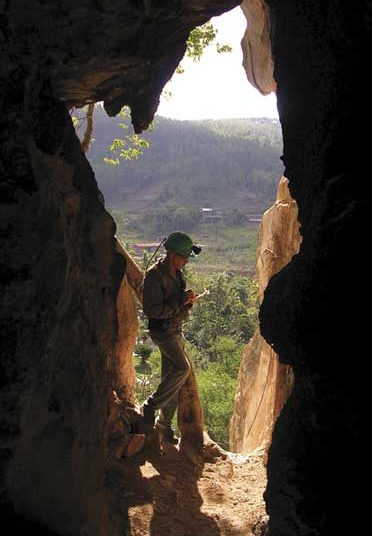Photos: Raudel del Llano
Entering the Gran Caverna de Santo Tomás, Cuba’s largest cave system, is a unique, unforgettable experience. With 46 km of galleries, it features all of the elements that are part of Cuba’s natural scenery, as well as special highlights of its natural and social history.
In 1954, Antonio Núñez Jiménez and several of his friends, members of the Cuban Speleological Society, began the scientific exploration of Sierra de Quemado mountain in the municipality of Viñales in Pinar del Río province. To their great surprise, they discovered a cave, and for 40 years it was believed to be the largest in Cuba and one of the 100 largest in the world.
The Gran Caverna de Santo Tomás is a cave system with eight levels, and its superimposed galleries comprise a complex labyrinth that runs in all directions. Some of the galleries merge, while others were cut off where gigantic sections of the cave roof collapsed, creating what are now canyons filled with well-preserved vegetation.
Water is the cause of this wonder of the cave world: the River Santo Tomás enters the mountains from the valley of the same name and crosses through for two kilometers, exiting through the valley of Quemado.
The cave galleries provided shelter for indigenous people, whose remains lie in the Las Antorchas Cave. On one of the walls at the entrance to Mesa Cave, those ancient inhabitants left a large mural of carved drawings (petroglyphs) that remain indecipherable.
One special feature of this cave system is its secondary formations, including stalactites and stalagmites in thousands of shapes and colors, as well as crystalline formations that make the galleries into giant gothic cathedrals.
It is impressive to wander for hours inside these caves, where the ground holds the remains of prehistoric animals and other fossils; the cave walls show traces of dinosaurs and snails that lived here more than 150 million years ago.
A large variety of representatives of the animal kingdom still live in these chambers, including exclusive species of crickets, shrimp, scorpions and crabs…
Another attractive option of the Santo Tomás cave system is to follow its galleries to the canyons, home to the original vegetation of the Cuban archipelago. It is a privilege to enjoy the nightingale’s song, to spot the tocororo and the olive-capped warblers in their constant flight and movement. These warblers migrate here in search of food and a place to rest when the harsh winter sets in on the continent.
One popular place for visitors is Avispas Cave, located 42 meters above sea level. Its main entrance is also an overlook for enjoying the surrounding scenery.
This cave system provided a refuge for runaway slaves, who left evidence of their presence, such as a batá drum that was discovered in a cave in Fanía Canyon. According to the legend recounted by folks in the area, back in the 19th century, the sound of late-night drumming reached the neighboring haciendas. It was a signal from the Fanía palenque, or settlement of runaway black slaves, summoning other slaves to the freedom of the mountains.
This was also the site of an encampment for the Cuban independence fighters during the War of 1895, including Lt. General Antonio Maceo, and it was where the Farmer Militias were created.
All of these natural and historic attributes were solid justifications for the Gran Caverna de Santo Tomás to be declared a national monument on June 5, 1989, and dubbed the “Princess of Cuba.”
One of the most exceptional features of this cave system is its absolute tranquility; it is amazing to enter this deep, dark and silent world. It is like going into a prehistoric forest, where human beings have not yet damaged what nature formed with so much love.
As a prodigious ecosystem of natural and human culture, this is one of the most extraordinary regions on the planet. Mother Earth was generous when she designed this landscape, and Santo Tomás was one of her best creations.
Visiting this cave is a life-changing experience. The impressions and positive energy you receive are transformed into vitality and a sense of well-being, developed by mysterious forces that call you back.










Are there different types of Tours to be arranged, or is there only one set trip that the guides take you on?